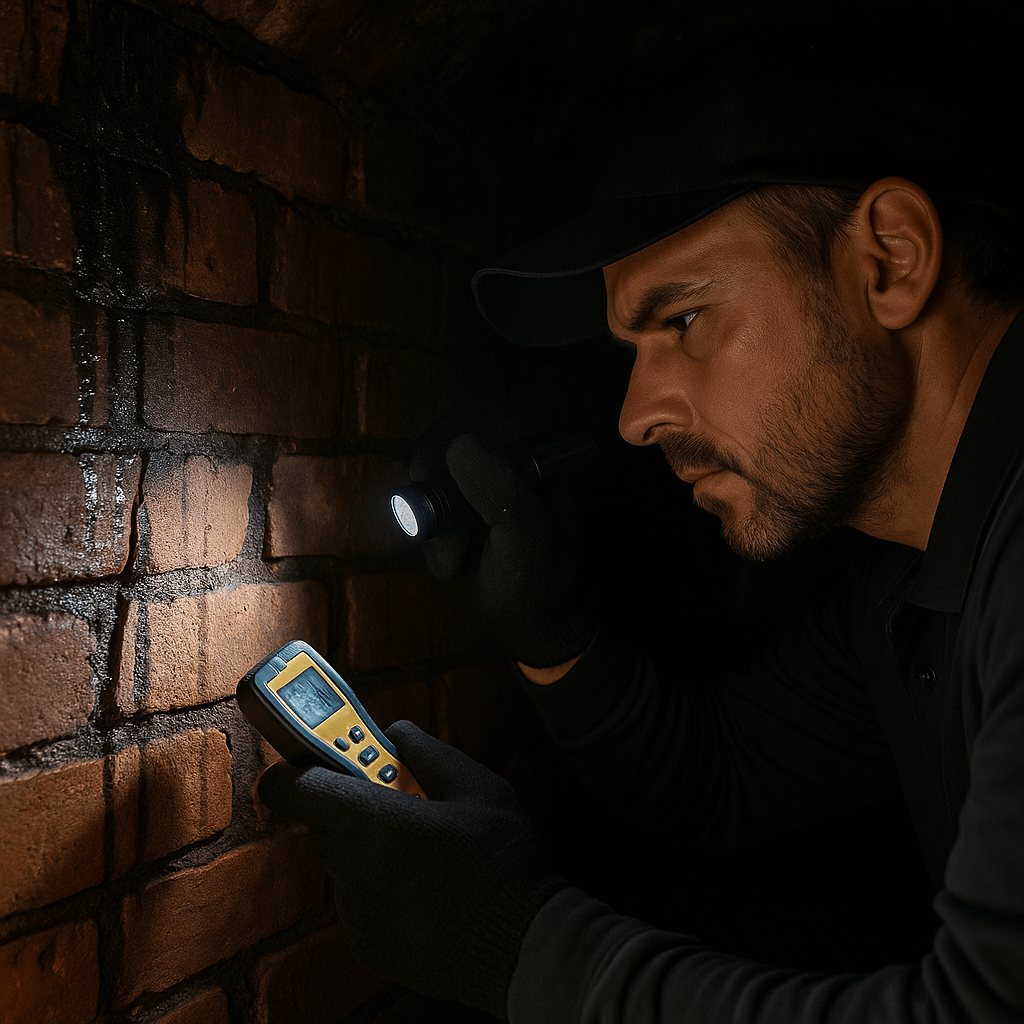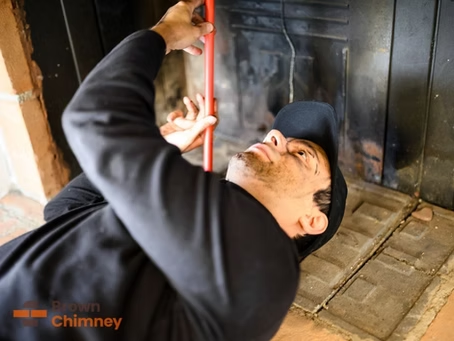How Chimney Leaks Start from the Inside Out
informed decisions, maintain your property, and ensure long-lasting protection.

Imagine relaxing at home on a rainy weekend when water starts to drip near the fireplace. But you haven’t used the fireplace in a while, and your exterior’s already been checked and waterproofed.
While most people assume chimney leaks come from rain sneaking in from above, maybe because of a cracked cap, most chimney leaks don’t start outside. Let’s break down why (before your drywall does).
How do chimney leaks start from the inside out?
You could apply water repellent on the outside or replace the cap on top, but if the internal damage has already begun, it would be like putting tape on a broken pipe.
Many homeowners spend hundreds sealing the outside of the chimney, but are understandably confused when a leak still appears after rain. This is because moisture can slowly eat away from within.
- Moisture gets trapped in the chimney.
Chimney leak damage often starts when moisture gets trapped inside the flue. When your chimney isn’t in use, the flue is exposed to everything your house breathes out, including moisture from cooking, showers, laundry, and many others.
If your home is well-ventilated, this moisture escapes. However, energy-efficient homes are often sealed tight, so indoor vapors have nowhere to escape. That trapped moisture condenses on the inner flue walls and drips down, often going unnoticed until damage sets in.
- Moisture soaks into the masonry.
Although bricks and mortar appear solid, they’re quite porous. The condensation that drips down the flue seeps into the masonry, and when freezing temperatures arrive, the ice expands, producing cracks in your chimney from the inside out.
These internal cracks eventually let rain leak in from the outside. By the time you notice anything wrong, moisture could have already caused extensive damage that can cost thousands of dollars to repair.
Signs of inside-out chimney leaks
You don’t have to wait for a dripping sound to check for chimney leaks. Keep your eyes open for these subtle clues:
- Musty odor indoors, even when it hasn’t rained
- Dark stains on the ceiling or walls near the fireplace
- Efflorescence (white chalky residue) and peeling paint on bricks
- Cracked or crumbling mortar joints inside or near the firebox
These issues may seem unrelated to your chimney at first—but they’re often the first signs that internal damage is already underway. Once you see any of these, schedule a moisture inspection. A professional will run a moisture meter through your chimney, showing if your bricks are holding any water.
Things to check during a chimney leak inspection
During a chimney leak inspection, a specialist will check your chimney for signs of water penetration and damage. Chimney experts like ones from Brown Chimney often use specialized tools to figure out how water is entering the chimney and how extensive the potential damage is.
They’ll inspect the chimney cap, chase cover, crown, damper, and other parts of the chimney. They’ll also check for receding mortar joints, spalling bricks, and poorly installed flashing. After a thorough inspection, they may recommend the repair or replacement of specific parts. They may also advise chimney relining, waterproofing, tuck pointing, or other masonry repairs, if necessary.
How to prevent chimney leaks
Once all repairs are done, prevent chimney leaks from happening again by doing the following:
- Regularly check your chimney crown and chase cover. They’re prone to weather damage and must be inspected every year.
- Cover up with a chimney cap. A well-fitted, correctly-sized, and corrosion-resistant cap is your first defense against external water sources.
- Make sure your flashing is in good condition. It should be properly installed so the waterproof seal on top of your chimney stays sealed.
- Repair gaps and any signs of deterioration in mortar joints and bricks.
- Get the right waterproofing solution for your chimney. Some sealants can merely trap moisture inside the chimney, causing more damage.
Most importantly, don’t scrimp on routine maintenance. Preventive care is much less costly than repairs when chimney leaks sneak up on you. Regular maintenance, which typically costs $100 to $375 for a standard sweep, can prevent thousands in future repairs.
Once water gets into the brick and starts causing internal damage, repairs can be expensive in the form of full tuck pointing, flue replacement, or even rebuilding entire chimney sections.
Don’t wait for water stains. Get your chimney checked regularly.
Just because your fireplace isn’t being used doesn’t mean your chimney isn’t wearing down. Moisture sneaks in quietly, and when damage shows up, it’s usually already done a number on your masonry.
Prevention is key. Have your chimney inspected regularly, especially before the winter season comes. Regular inspections from certified professionals—like us at Brown Chimney—can stop leaks before they start. Don’t wait for signs of damage to show up.
RELATED ARTICLS

.webp)
Schedule an Inspection Now
with expert chimney care.







